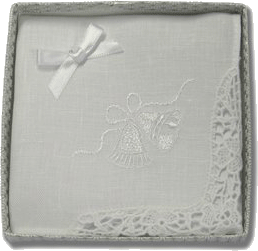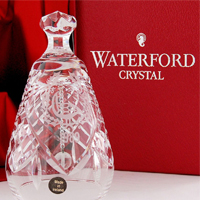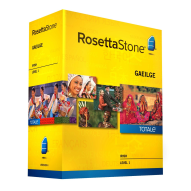History of Irish Linen
 |
Embroidered Wedding Bells Irish Linen Handkerchief |
You probably know that Irish linen is the finest and most famous linen in the world. I was very interested to learn that linen is also the oldest fabric known to man, and even pre-dates the invention of the wheel. It was prehistoric man who created the first-ever fabric from the fibers of the flax plant, but it was probably the Egyptians who pioneered the industrial production of what was to become the "cloth of kings".
Circa 3000 BC, linen was the favored fabric of the Egyptian aristocracy. Mass production of linen would have had to be in place because it would have taken approximately 1000 yards of linen to wrap a body as part of the mummifying process.
It was to be several thousand years before linen made its way to Ireland. It is thought to have arrived in early Christian times and it is said that St. Patrick is buried in a shroud of Irish linen. While historical records show that linen was being made in Ireland through the Middle Ages, it was not until the early 17th Century that mass production began. It was concentrated in the north of the country, particularly in the area of land between the Bann and the Lagan Rivers. To this day, the area is known as "The Linen Homelands".
In the late 17th century, the Huguenots, who had recently fled from France to Ireland, added their expert textile skills to a now well established Irish linen industry. The fame and reputation of the fabric flourished but why is Irish linen the finest quality in the world?
 |
Kilkenny Irish Linen and Lace Runner |
There are several reasons that make the Irish fabric far superior. The finenest of the yarns and woven cloth, which is still achieved by Irish spinners and weavers, as well as the skills passed down through the generations, are notably created in the delicately woven and intricately designed cloth. The softness of the water in Irish streams, used for bleaching, dyeing and finishing, results in cloth which is more appealing to the touch. The quality of the beautiful patterns and feel of Irish linen cannot be reproduced anywhere else.
Another reason that makes Irish linen the world's favorite is the use of the process where the woody bark of the flax plant is naturally rotted so that the fibers come loose from the main stem. The seeds are removed and used for linseed oil and the bark is removed by a process called "scutching". It is used for chipboard. No part of the flax plant is wasted.
The fibers are combed, to separate the long line and short tow fibers, then they are lightly twisted before undergoing a wet spinning process. This produces strong, fine yarn. The short tow fibers are spun using a dry spinning method. Dry-spun yarns have a heavier count and are used for heavier fabrics, household textiles and knitwear. Ireland is the home of the most advanced wet and dry spinners in the world.
Modern linen finishing is also a complicated process, and new techniques are continually being developed. Different finishing treatments can produce the crisp elegance of a fine damask tablecloth, the cool comfort of linen sheets, or meet the demands of the fashion industry for new textures and performance. Recently, manufacturers have developed Irish linen that is easy to care for, needs less ironing for the crisp appearance, and can be machine washed and tumbled dried.
Lastly, Irish linen is admired because the production of it is environmentally friendly. The process from fiber to end product is monitored closely to insure this. The entire flax crop is used for oil, straw and fiber, and for everything from linoleum and soap to cattle feed and paper. Waste is kept to a minimum during processing and the industry acts responsibly to ensure that all chemicals such as bleaches and dyes are treated fully before disposal. Irish linen is a wonderful fabric, touching every element of our lives. It is synonymous with elegance and comfort. Irish linen is the highest quality of all.
Disclaimer: LittleShamrocks.com is an affiliate website that receives commissions from sales of the products listed. We have purchased and sampled many, but not all, of the products on these pages.
© Copyright LittleShamrocks.com. All Rights Reserved.




